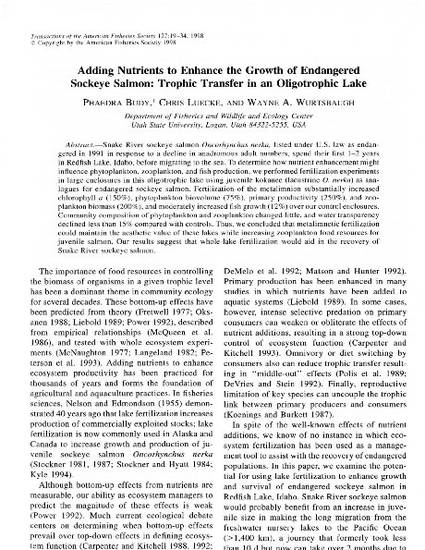
- adding nutrients,
- enhance,
- growth,
- production,
- endangered,
- sockeye salmon,
- trophic transfer,
- oligotrophic lake
Snake River sockeye salmon Oncorhynchus nerka, listed under U.S. law as endangered in 1991 in response to a decline in anadromous adult numbers, spend their first 1–2 years in Redfish Lake, Idaho, before migrating to the sea. To determine how nutrient enhancement might influence phytoplankton, zooplankton, and fish production, we performed fertilization experiments in large enclosures in this oligotrophic lake using juvenile kokanee (lacustrine O. nerka) as analogues for endangered sockeye salmon. Fertilization of the metalimnion substantially increased chlorophyll a (150%), phytoplankton biovolume (75%), primary productivity (250%), and zooplankton biomass (200%), and moderately increased fish growth (12%) over our control enclosures. Community composition of phytoplankton and zooplankton changed little, and water transparency declined less than 15% compared with controls. Thus, we concluded that metalimnetic fertilization could maintain the aesthetic value of these lakes while increasing zooplankton food resources for juvenile salmon. Our results suggest that whole-lake fertilization would aid in the recovery of Snake River sockeye salmon.

Note: This article appears in the Transactions of the American Fisheries Society and has been posted here with permission from the publisher.